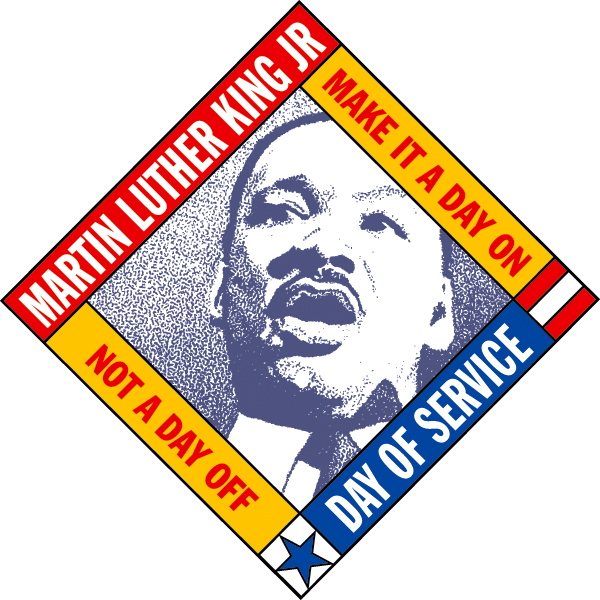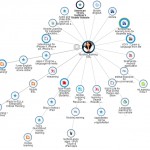As TESOL teachers, we have the unique opportunity to inspire our students not only in language skills but also in global awareness and social justice. Teaching English can go beyond grammar and vocabulary—it can become a platform for discussing essential values and histories that shape the world we live in. One powerful curriculum idea is to explore the legacy of Dr. Martin Luther King, Jr., using his work and vision as a foundation for empowering students with concepts of racial and social justice. This curriculum not only enhances language skills but also instills values of equality, justice, and activism in the classroom.
Why Teach Dr. King’s Legacy in an ESL Setting?
Dr. Martin Luther King, Jr. is a global figure whose messages of racial and social justice resonate across cultures. By introducing Dr. King’s work, TESOL teachers help students gain a deeper understanding of historical and contemporary issues related to civil rights. It also allows students to engage with English in a meaningful way, focusing on powerful language that has impacted social movements worldwide.
This curriculum connects language learning with real-world issues, fostering critical thinking, empathy, and the skills necessary for students to discuss complex ideas in English. It also helps students relate to Dr. King’s advocacy for justice, encouraging them to think about how they can promote equity and inclusivity in their own communities.
Key Themes and Concepts to Explore
The curriculum should be organized around key themes that Dr. King emphasized, with each theme serving as a unit for discussion, activities, and language development. Here are some essential topics:
- Nonviolent Activism: Introduce students to Dr. King’s philosophy of nonviolent resistance, a strategy he learned from Mahatma Gandhi. Nonviolent activism uses peaceful methods to advocate for social change, helping students learn about ways to address conflict constructively.
- Equality and Justice: Dr. King championed equality and justice, especially in the fight against racial segregation and discrimination. This unit can focus on discussing what equality and justice mean in various contexts, allowing students to share personal experiences and opinions on social fairness.
- The Power of Speech and Persuasion: One of Dr. King’s most significant contributions was his ability to inspire others through powerful oratory. His speeches, especially the famous “I Have a Dream” speech, can be studied for their rhetorical devices, helping students develop language skills for effective communication.
- Community Empowerment: Dr. King believed in building strong communities as a foundation for social change. This theme emphasizes the importance of working together to support and uplift communities, encouraging students to think about how they can contribute to their own communities.
Practical Activities for TESOL Classrooms
Each theme can be enriched with activities that build language skills while engaging students with Dr. King’s values. Here are some suggested activities for each theme:
1. Nonviolent Activism: Discussion and Role-Play
- Objective: To help students discuss and practice conflict resolution in English.
- Activity: Introduce Dr. King’s philosophy of nonviolent activism. Then, set up role-play scenarios where students must resolve hypothetical conflicts peacefully, such as a disagreement between friends or a community issue. Encourage students to use phrases like “I understand your point” or “Let’s find a solution together,” teaching them constructive ways to handle differences in English.
- Fun Fact: Dr. King was greatly influenced by Gandhi’s nonviolent resistance during India’s struggle for independence. He believed that peace and love were stronger forces for change than violence and anger.
2. Equality and Justice: Personal Reflections and Story Sharing
- Objective: To build vocabulary related to fairness, discrimination, and justice, while encouraging students to express their own experiences and opinions.
- Activity: Begin by discussing key terms like “justice,” “fairness,” “rights,” and “oppression.” Invite students to share personal stories or observations about equality, either from their own lives or from their knowledge of current events. Use a vocabulary-building activity where students match words with their definitions or synonyms to reinforce understanding.
- Fun Fact: Dr. King led the Montgomery Bus Boycott in 1955, which lasted over a year and became a turning point in the American civil rights movement. This boycott highlighted the power of collective action for justice.
3. The Power of Speech and Persuasion: Analyzing “I Have a Dream”
- Objective: To develop comprehension skills and introduce rhetorical devices used in effective public speaking.
- Activity: Play Dr. King’s “I Have a Dream” speech, encouraging students to listen carefully to his tone, repetition, and word choice. Discuss rhetorical devices such as repetition (“I have a dream…”), metaphors, and vivid imagery. Afterward, have students write a short speech about a positive change they want to see in the world, using some of the same devices to strengthen their message.
- Fun Fact: Dr. King’s “I Have a Dream” speech was delivered during the 1963 March on Washington for Jobs and Freedom, attended by over 250,000 people. It’s one of the most iconic speeches in American history and continues to be studied for its powerful language and vision for the future.
4. Community Empowerment: Class Project for Positive Change
- Objective: To help students work collaboratively in English, fostering a sense of social responsibility and communication.
- Activity: Discuss how Dr. King promoted community empowerment. Then, work with students to brainstorm a small class project that could positively impact their school or local community, such as organizing a recycling drive or creating posters with positive messages. Have students work in teams to plan and present their ideas, practicing group discussions, persuasion, and public speaking.
- Fun Fact: Dr. King believed in the “Beloved Community,” an idea where everyone could live in harmony and mutual respect. He saw community building as essential to creating a just and inclusive society.
Language Skills Development through Dr. King’s Legacy
Dr. King’s legacy offers TESOL teachers numerous ways to incorporate essential language skills into the curriculum, from vocabulary and listening comprehension to writing and public speaking. Here’s how each activity supports language learning:
- Vocabulary Expansion: Discussing complex social themes introduces students to words and phrases like “equality,” “activism,” “segregation,” and “civil rights,” expanding their English vocabulary in meaningful ways.
- Listening and Comprehension: Analyzing speeches like “I Have a Dream” improves listening comprehension, helping students understand the nuances of tone, pacing, and emotion in spoken English.
- Critical Thinking and Expression: Asking students to reflect on themes of justice and equality develops their ability to articulate ideas and share opinions, crucial skills for fluent communication.
- Collaboration and Teamwork: Activities like group projects for community empowerment encourage students to practice English in collaborative settings, building confidence in team discussions and group planning.
Empowering Students with Dr. King’s Vision
Teaching Dr. King’s legacy of social justice, equality, and nonviolence is about more than language; it’s about cultivating empathy, resilience, and a commitment to positive change. By engaging students with these themes, we help them see the broader impact language can have as a tool for advocacy, empowerment, and connection.
When students learn about Dr. King’s life, his struggles, and his victories, they begin to understand that language has the power to bridge divides, inspire action, and create communities grounded in understanding and respect. This curriculum can help TESOL students become not only better English speakers but also informed global citizens equipped to make a difference.
Conclusion: A Legacy of Empowerment for All Learners
Using Dr. Martin Luther King, Jr.’s legacy in the ESL classroom brings history, language, and social values together. By teaching his powerful messages and modeling ways to discuss justice, equality, and community in English, TESOL teachers can inspire students to think beyond themselves and explore ways to contribute positively to the world. Empower your students with the language skills they need to express their ideas, values, and aspirations—helping them understand that, like Dr. King, they, too, have a voice that can make a difference.



